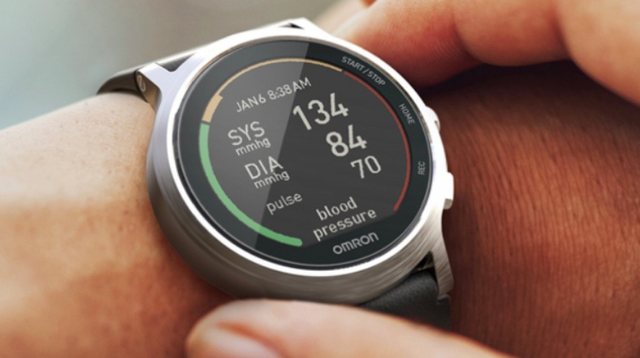



Get new exclusive access to healthcare business reports & breaking news




A smartwatch is a compact wrist-worn gadget that combines the familiar features of a smartphone and the convenience, elegance, and functionality of a watch.
The vast majority of smartwatches are linked to a smartphone, allowing the wearer to be notified of incoming texts, emails, calls, and other notifications from mobile apps. In many devices, you can now make phone calls, reply to messages, play music, schedule tasks, and do much more right from your smartwatch.
Most smartwatches sport small beautiful color displays, but some low-end devices feature simple, black-and-white high-contrast displays. Many smartwatches are operated using a touchscreen, some have physical keypads, and others use a combination of touchscreen and push-buttons.
Despite entering the mainstream market in the past few years, smartwatches have actually been in the pipeline for many years. Given the small size and increasing computing power of computers in the 20th century, electronic devices shrank so much that they could fit into watches.
Back in 2004, technology giant, Microsoft released Smart Personal Object Technology (or SPOT as it was popularly known), making it the first true smartwatch. Unlike smartwatches currently on the market, the SPOT only received one-way instant messages and emails, as well as stock, news and weather updates via FM Radio.
With the emergence of powerful smartphones, device tech companies started making companion smartwatches like the Apple Watch, the Pebble, and Sony Ericsson’s LiveView. Android Wear, the first operating system specially developed for smartwatches running on Android, was released by Google in 2014. Rival Apple followed suit with WatchOS in 2015 for its Apple Watch series.
Now, smartwatches are almost ubiquitous, with device makers releasing more feature-rich, more robust, and more powerful models year after year. These smartwatches come in all shapes and sizes, and they play an increasingly important role in their users’ daily lives.
And they play an increasingly important role in the tech sector. Thanks to ever-ballooning demand, the smartwatch market is burgeoning at an epic pace. A recent market research report estimates that the global market for smartwatches will grow in value at a remarkable CAGR of 16.2 percent between 2018 and 2025 to reach $31.07 billion. By comparison, the smartwatch market was worth roughly $9.265 billion in 2017.
According to the report, the biggest growth will be witnessed in the Asia-Pacific market (19.4% CAGR), while the North American smartwatch market registered the highest revenue share, and is predicted to grow at a CAGR of 15 percent.
Smartwatches are a type of increasingly diverse wearable technology and are no longer merely extensions of smartphones. Most of them now come with heart-rate monitors, fitness trackers, pedometers, and sleep-quality monitors to help users stay on top of their wellness and health. The best of them may also boast EKG and blood pressure monitors that help manage or detect cardiovascular problems.
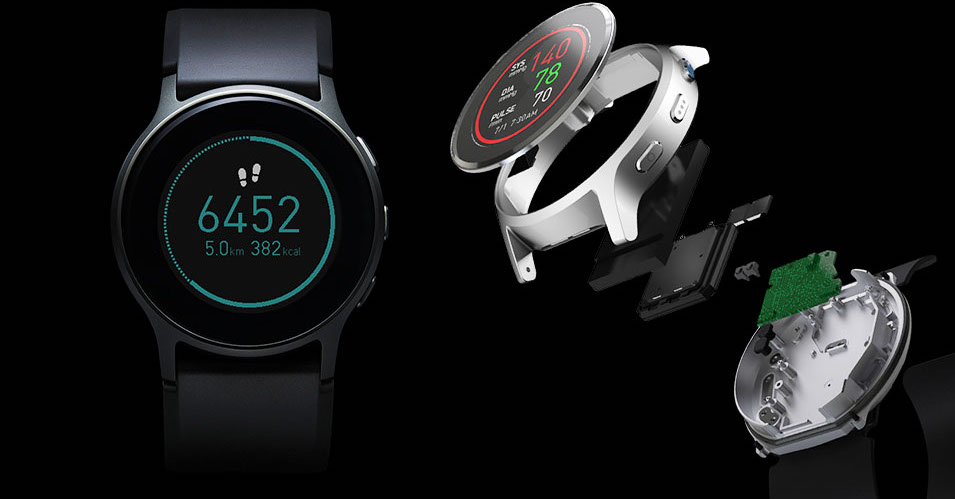

Enter the Omron HeartGuide. The HeartGuide is not a mere smartwatch. It is the first FDA-approved blood pressure (BP) monitoring smartwatch, a category creator all its own. It combines all the important features of a conventional smartwatch with an accurate blood pressure monitoring feature.
Among the traditional features offered by other smartwatches, it includes recording activity, sleep measurement, and weight tracking. Other important features like medication tracking go one step further by allowing users to stay on top of their daily medication doses, thereby increasing medication adherence.
At the end of 2017, the Japanese health tech firm Omron Healthcare secured FDA clearance for its highly-anticipated HeartGuide, a smartwatch that comes complete with a state-of-the-art oscillometric blood pressure monitor.
The first of its kind in the healthcare tech world, the original version of the HeartGuide was revealed at CES 2018. The new improved HeartGuide smartwatch, alongside a mobile app and Alexa Skill, were revealed at CES 2019. This version of the smart wearable went on sale on January 9, 2019, with a reasonable price tag of $499.00 and started shipping sometime in March with free 2-day shipping if purchased on the Omron site.
It has clinched numerous awards, including Engadget’s Best Wearable Award, Tom’s Guide’s Best Health Award and Techlicious’ Top Picks of CES Award for its innovation in heart health technology at this year’s CES. Its most recent accolade is being named among the top inventions of 2019 by Time Magazine, a truly rare honor.
Time’s recognition is by no means an accident. HeartGuide is like no other wearable. With BP monitoring serving as its core feature, the smart gadget is designed to cater to 103 million hypertensive Americans who find it challenging to check their BP readings consistently and in a discreet way.
By incorporating an oscillometric blood pressure monitor into an elegant watch with sleep and fitness tracking, Omron made a device that makes managing of heart and circulatory health easier and more hassle-free. It also paints a clearer, more holistic picture of the patient’s overall health and wellbeing.
Given that HeartGuide’s first batch sold out so quickly that Omron had to double its production capacity, it’s clear that physicians and consumers think it offers value for its price.
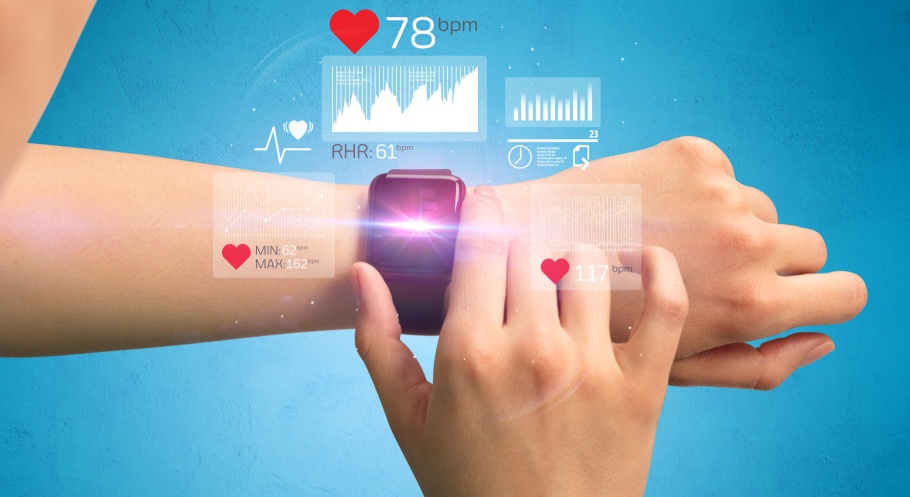

Ultimately, the Holy Grail feature of the device is its flexible synthetic band designed to easily inflate and deflate while keeping its shape, so that it can fit snuggly and take blood-pressure readings on the fly. Thanks to the inflatable cuff embedded in the band, HeartGuide delivers clinically accurate BP readings in a jiffy, much akin to upper-arm sphygmomanometers found in major hospitals.
Barely registering on the scale at a paltry 4.1 ounces, HeartGuide is a thing of beauty inside and out. It boasts a transflective memory-in-pixel LCD display, a Lithium-ion polymer battery that packs a punch, low-energy Bluetooth technology, 30mm thick band, and a ton of sensors. It only needs to be juiced up twice per week and can hold up to 100 blood pressure readings, physical activity history for up to 7 days, and sleep quality measurement up to 7 times.
For those who are not fond of small smartwatch displays, there is also an intuitive, free-to-download companion app for both Android and iOS smartphones. It features a beautiful dashboard that will better educate you on your blood-pressure and health readings while providing customized heart health improvement recommendations.
HeartAdvisor platform syncs sleep data, step count, and BP readings to a cloud service that’s fully HIPAA-compliant, as well as Apple Health. For a medical gadget, the HeartAdvisor app goes above and beyond by providing heart insights and wellness recommendations based on your BP readings.
That’s not all. Currently, the platform is fast developing into a standalone ecosystem. Thought it remains closely attached to the HeartGuide, HeartAdvisor can also work seamlessly with other devices made by Omron, including weight scales, home blood pressure monitors, and EKGs, among others.
This means HeartAdvisor users are able to view all their health, BP, and fitness under one roof, so they don’t have to switch between devices and applications.
But these are not the only features. With newer health-focused features like intelligent health insights, medication tracking, muscle, and fat measurements, Omron is leaving no stone unturned to ensure the HeartAdvisor app becomes the personal health monitoring platform of choice for users.


Not wanting to limit their service to only the HeartAdvisor app, Omron also offers an Alexa skill for the HeartGuide watch and HeartAdvisor app. Simply leverage Omron’s Health Alexa skill with an Echo or a smart speaker of your choice to conveniently use voice to monitor your heart health.
This is designed for users who prefer listening to their BP measurements, health insights, tips for better health management, and much more. For example, you can ask, “Alexa, what is my blood pressure?” when you want to check your BP.
Of course, it’s Alexa today, and the door is open to welcome the use of other digital assistants like Google Home.
Omron’s HeartGuide is already a bestselling smartwatch and even so, the best is yet to come. With new features being added to the watch with each iteration and even more frequent health management focused features being added to the HeartAdvisor app, Omron is set to become a leader in the digital health space as well.
Offering the entire hardware and software in a sleek, seamless package can be a challenge for anyone, but Omron has proven that it can be done elegantly and efficiently.
Omron has brought their decades of expertise in accurate BP measurement into a wearable, which in itself is no mean feat. But to top it off, they offer a whole digital package in the form of the HeartAdvisor app and the Alexa skill that makes it an irresistible offering.
The bottom line is that HeartGuide will remain one of the most doctor-recommended BP-monitoring wearables in the foreseeable future.
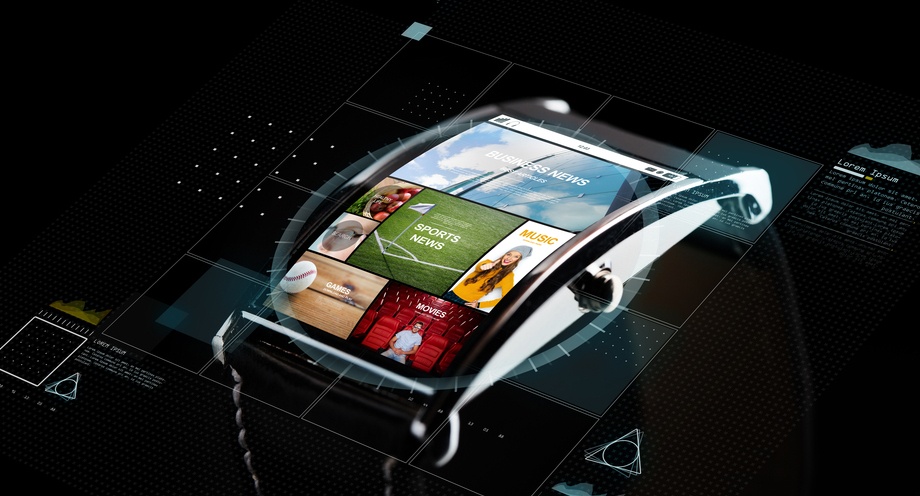

Watches haven’t lost all their allure. Some people wear them because they not only because they tell time but also because watches are timeless fashion and style pieces. They certainly look and feel fabulous on your wrist.
Unfortunately, the rise of smartphones has almost killed off the watch market. After all, who needs a watch when your phone already has an alarm, calendar, and tells time on top of making calls, browsing the internet, and receiving messages?
Smartwatches, on the other hand, offer something a little different than regular watches and even smartphones. They offer all basic watch features but they also are an extension of your smartphone. In essence, a smartwatch is a fitness device, a smartphone, and a fashion accessory, all wrapped in one beautiful and clever watch.
Most smartwatches are equipped with GPS capability, which means they can offer turn-by-turn directions much akin to high-end car navigation systems.
Take Apple Watch, for instance. The flagship Apple smartwatch delivers subtle yet distinct vibrations to your wrist, telling you whether you should turn left, right, or stop while giving you directions. This takes the hassle out of navigation, helping you fully focus on the task at hand, whether that’s driving, walking, or running.
We have all been through the ordeal of trying to locate our phones. Thanks to NFC, Bluetooth, and other connectivity technologies, smartwatches can render the inconvenience of losing a phone or connected devices a thing of the past.
The majority of these wearables have a “Locate Phone” capability. Any device or phone connected to the smartwatch – via either internet, Bluetooth or other near field technologies – can be “found” by simply tapping “Find Phone” on the watch interface. The lost or misplaced device will beep, ring, or vibrate wherever it is.
At their core, smartwatches are souped-up fitness trackers. They are kitted out with a series of sensors that’ll help the user stay on top of their fitness goals. Whether you love to jog, run, walk, hike, swim, or hit the gym, your smartwatch will be a handy exercise companion.
Aside from tracking your workout routine, the device can monitor your sleep, pulse rate, and heart rate, and count steps and calories burned, as well as calculate an array of other critical fitness and health metrics.
Moreover, modern smartwatches can serve as your personal trainer or fitness coach. Some features dedicated to exercise and workout modes, such as weight-lifting, strength training, swimming, running, walking, hiking, swimming, and so forth.
The beauty of today’s smartwatches lies in the fact that they allow you to answer incoming calls and reply to messages without having to remove your phone from your pocket. This hands-off approach to replying to messages and receiving calls makes the smartwatch a perfect smartphone companion for exercising, working out, driving, and other situations where handling a phone is not viable.
Even better, some smartwatches have built-in voice recognition technology which allows you to use digital assistants like Alexa, Siri, Google Assistant, and Cortana to operate your phone hands-free and screen-free.
Aside from incoming calls, texts, and emails, most smartwatches will notify you of chat messages, app notifications, and social media activity. Others will even enable you to reply and interact with the mobile app using touch or voice support.
That means you don’t have to fish out your phone from your pocket to see that chat message and know what your social media friends are up to. It’s truly handy to be able to get notified immediately!
The problem with most smartphones is that they need to be recharged almost every 24 hours. With smartwatches, that’s a thing of the past because they have quite powerful batteries that can power your device for days if not weeks between charges. That means you can enjoy your long trips, trekking, fishing, and other activities that take days without having to worry about the battery running out on you.
Smartwatches are truly amazing, especially when it comes to entertainment. Just like smartphones, they can play your favorite music playlist and you can watch YouTube and other exciting videos whenever and wherever you may be.
Given the small screen, smartwatches may not be able to replace the big-display appeal of smartphones and tablets, but they are picture-perfect for those instant entertainment moments. Convenience is the name of the game when it comes to smartwatches.
Perhaps the biggest reason people prefer smartwatches is that they are super lightweight. However, under the hood, they pack a punch, offering a buffet of smartphone-grade features and capability. It’s no wonder these small gadgets have become a darling of office workers, athletes, and everyday users alike. They are simply ready-made for every aspect of your life!
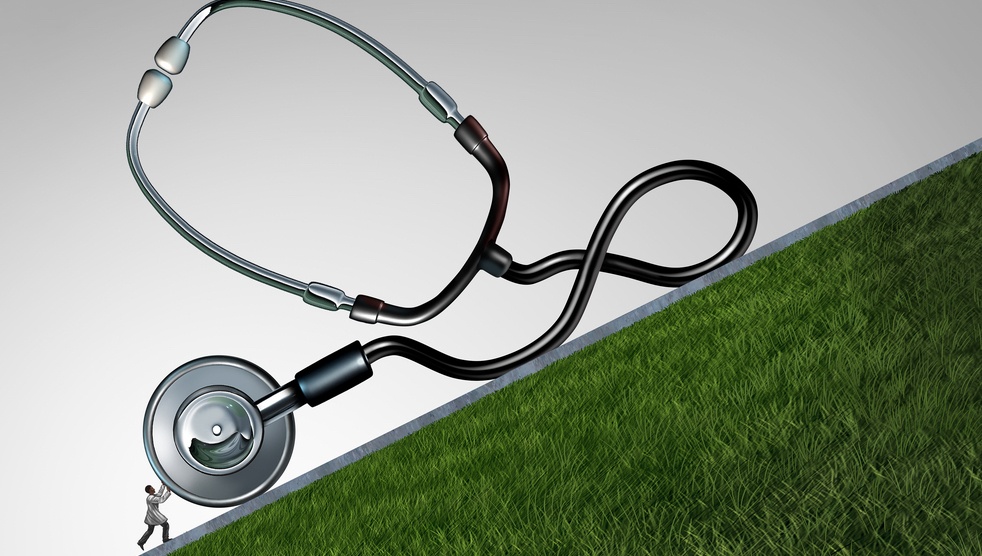

Among the numerous lifestyle diseases, high blood pressure, heart disease, obesity, and diabetes are the most prevalent.
Heart disease alone kills more Americans than any other cause of death in the US, according to recent CDC (Centers for Disease Control and Prevention) statistics. More specifically, roughly one in every 4 deaths in the United States is directly linked to heart disease. That’s about 647,000 Americans dying from the condition yearly.
Recent statistics forecast that more than 45 percent of Americans will have one or more complications associated with heart disease by 2035, which is worse than an earlier forecast by the American Heart Association (AHA) of 40 percent by the year 2030.
In the same report, the American Heart Association predicts that the US healthcare system will foot a bill of around $1.1 trillion to deal with heart disease by 2035, up from $555 billion in 2016.
As if that isn’t shocking enough, the number of people at risk for strokes and heart attacks in the US has gone through the roof in the past decade or so. CDC estimates that a heart attack or stroke strikes at least one person every 40 seconds in the US, which means over 805,000 Americans have a heart attack annually.
The same story goes for hypertension, also known as high blood pressure (HBP), which is the single biggest risk factor for cardiovascular diseases (CVD), kidney failure, and stroke, among others.
Nearly 103 million American adults are estimated to have hypertension, according to recent stats from the American Heart Association (AHA). That accounts for approximately half (52.7 percent) of all adults in the country.
And the situation is getting worse, adding more burden to the already hefty US healthcare costs.
Consider this: In the ten-year period ending in 2015, the death rate in the US from high blood pressure rose by close to 11 percent, with the actual number of HBP deaths reaching around 79,000 by 2015.
HBP affects close to one-third of all adults globally, and is the most common culprit for deaths associated with stroke, heart attack, heart failure, and other CVDs, according to Dr. Paul Muntner, the co-chair of the AHA report.
No matter how you look at it, high blood pressure is the costliest and the most prevalent cause of death in the United States.
The numbers don’t lie: 46 percent (AHA) of the US adults have high blood pressure, which is defined as systolic blood pressure of 130 mm Hg or higher. Also, around 30 percent of Americans have prehypertension, meaning they register systolic blood pressure readings of between 120 and 139 mm Hg.
Obesity — another leading risk factor for diabetes, high blood pressure, cardiovascular disease, stroke, and cancer — has become so prevalent in the US that it has reached epidemic levels.
According to surveys carried out by the National Health and Nutrition Examination in 2011-2012 and 2013-2014, it’s clear that obesity prevalence has surged in both children and adults in the United States.
For instance, the prevalence of obesity in children (those aged between two and 19 years) rose slightly from 16.9 percent in the 2011-2012 period to 17.2 percent in the 2013-2014 period. In adults, the rate of obesity spiked from 34.9 percent to 37.7 percent in the same periods.
From the data, it seems like obesity is more rampant in minority groups and female populations than in white and male counterparts.
Regardless of race and gender, there’s a strong connection between obesity and cardiovascular disease. In a 2016 meta-analysis study, scientists note that the relative risk of heart disease in obese people was 1.45 times higher than in their normal-weight counterparts. That’s an indication that obesity can increase your risk of cardiovascular disease even if you don’t have diabetes, high cholesterol, and HBP.
While cardiovascular disease, stroke, diabetes, and other HBP-related lifestyle diseases can be deadly, they are also preventable in the vast majority of individuals.
Detecting and treating high blood pressure early, as well as continually monitoring its progress, can make a huge difference. That’s exactly where blood pressure monitors like Omron’s HeartGuide come in handy.
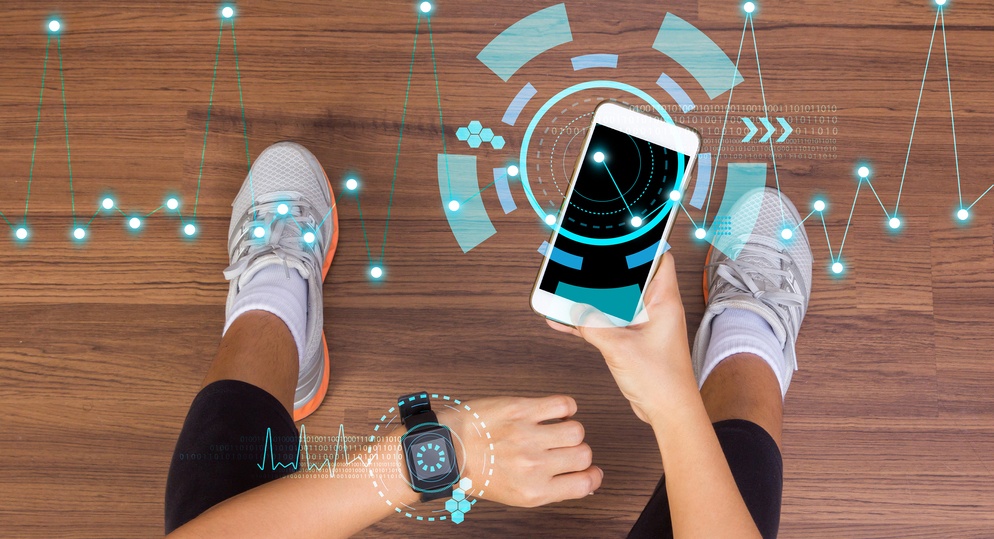

Smartwatches do much more than look sleek and help us get or stay fit. Aside from being fabulous fashion pieces and providing fitness tracking, these nifty wearables can also help clinicians gather and analyze large volumes of patient data.
Real-time analysis of time-stamped patient data provides healthcare providers with actionable health insights. This enables them to make a faster, more cost-effective and more accurate diagnosis, plus formulate a more personalized treatment plan.
With swaths of wellness-driven medical research underway, smartwatches have undoubtedly huge potential to improve healthcare delivery, enhance the patient experience, and increase monitoring. This is especially true for patients with chronic conditions like high blood pressure, diabetes, heart disease, and so on.
Accordingly, the wearable tech industry has stepped up its game, and smartwatch sales are soaring.
The market research group International Data Corp. (IDC) predicts that 198 million wearable devices will be shipped by the end of the year, registering an uptick of 15.3 percent in annual growth.
Although that figure includes step-counting shoes, smart clothes, and wristbands, smartwatches take the lion’s share, accounting for 91.8 million shipments. That’s 44.2 percent of all sales of wearable devices referred to in the research.
On an even more positive note, IDC research estimates that smartwatch sales will jump to 131.6 million units by 2023, growing at a commendable CAGR of 9.7 percent between 2019 and 2023. According to the research firm, much of this growth can be attributed to the increasing adoption of smartwatches and other wearables in the healthcare sector.
With this trend, it’s becoming increasingly clear that smartwatches can play a crucial role in digital health and telemedicine. And it’s not hard to see why.
Smartwatches and other wearable devices can constantly gather and analyze patient data which can then be sent over to their primary care physicians, clinicians, and other relevant caregivers. Additionally, it gives patients the opportunity to self-monitor and actively stay on top of their health.
The real boost comes from the cutting-edge technologies powering the devices under the hood. Gone are the days when smartwatches were nothing more than simple calorie and step counters.
Today, a new breed of smartwatches brings to consumers onboard sleep tracking and heart rate monitoring like never before. All of these functions and more are rolled into one elegant wristband that delivers lab-grade accuracy.
ECG/EKG monitors have also found their way into wearables. These devices on the cutting edge of wearable technology have the capability to measure electrocardiograms, which checks the patient’s heartbeat and overall health. For this reason, an EKG-equipped smartwatch can help detect heart issues like atrial fibrillation (AFib), a condition that’s characterized by irregular heart rhythm.
It all started in 2018 when tech behemoth Apple integrated an FDA-cleared ECG feature into the fourth iteration of its smartwatch line, Series 4 Watch. Two years ago, this was the first and only smartwatch to boast the feature.
Garmin, Fitbit, and other leading smartwatch makers have integrated the EKG feature into their devices. For example, Garmin has recently incorporated the Cardiogram app into its latest smartwatches, helping detect high blood pressure, AFib, sleep apnea, and diabetes.
Wearable blood pressure monitors are also all the rage right now. What makes these monitors stand out from other smartwatches is their ability to measure blood pressure on the go.
Omron Healthcare pioneered this segment in 2019 when it launched HeartGuide, the first-ever blood pressure monitoring smartwatch. It looks like a smartwatch, works as a smartwatch, but hidden from plain sight are its oscillometric blood pressure sensors.
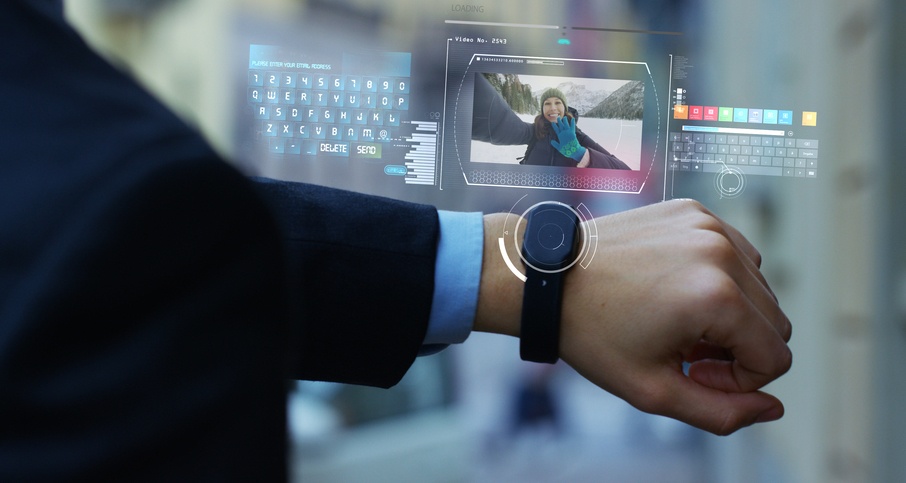

The wearable healthcare segment is booming, and as it grows, it will certainly place more smartwatches and wearable tech in the hands of more consumers.
Because of this, the sales of health-based smartwatches and wearables in the United States are anticipated to grow at a CAGR of 10 percent to exceed 120 million by 2023, according to the BI Intelligence’s Digital Health Ecosystem report.
With state-of-the-art smartwatches ushering in functions like blood pressure monitors, EKGs, biosensors, and sleep-monitors to help patients track their medical conditions, they have a huge potential to not only improve health care delivery but also to save lives.
More crucially, this new breed of fitness-related and health-focused features could be the much-needed spark to send the smartwatch segment in an upward trajectory. It’s a major boost given that the first generation of smartwatches didn’t exactly live up to their hype.
Basic pedometers and fitness trackers are being replaced by these upscale smartwatches. This is a clear indication that consumers are after wearable devices that can do much more than merely count calories and steps.
More robust health features could give consumers, especially those with chronic conditions, a plausible reason to pay top dollar for these powerful devices. After all, if a wrist-worn device is not merely convenient but can also help you better manage your health condition, it will more likely be a worthy buy.
There’s also an increasing demand for wearables across the healthcare spectrum.
More hospitals, medical research facilities, and other healthcare providers are likely to jump on the wearable health technology bandwagon as well. Some are already trialing smartwatches in monitoring their patients’ health.
A recent survey conducted by AT&T in conjunction with HIMSS showed that 47 percent of hospitals are remote-monitoring their patients with chronic conditions via health-based wearables and mobile apps, while 14 percent are planning to in the near future.
According to the survey, a third of hospitals claim that they use health-based wearables to track the activity and progress of their post-op patients. About a third of the surveyed hospital executives also say they provide patients with wearables to promote preventive care.
43 percent of hospitals are already accepting data sent by patient-owned devices, while 19 percent are planning to accept it soon.
In addition to health providers, employers and health insurers are also looking to tap into the benefits of health-monitoring wearables. And there’s good reason for this.
Because smart wearables incentivize lifestyles and behaviors that minimize hospital readmissions and visits, they help patients monitor their own health. This helps health insurance companies increase their customers’ lifetime value and reduce the increasing costs per patient.
Big insurers like Humana, Blue Cross Blue Shield, and Aetna are already looking into ways to leverage smartwatches to encourage patients to stay on top of their own health.
Take Aetna, for instance. The Hartford-based insurer recently joined hands with Apple to create an incentive app aptly called Attain, which allows its subscribers to buy an Apple Watch and then earn the purchase through tracked healthy behavior.
Forward-thinking companies are also realizing the benefit of providing wearable health technology devices to their employees. Naturally, healthy employees are usually more productive, less likely to take expensive sick leave, ultimately benefiting companies in numerous ways.
As with anything marketed for medical purposes, wearable health devices must go through rigorous FDA clearance process before they can hit the mainstream market.
As such, smartwatch makers focusing on the healthcare segment have to carry out thorough efficacy tests and accuracy studies to make sure their products will get the nod of the FDA.
On its part, the Food and Drug Administration put in place a digital health pre-certification pilot program in 2018. The so-called Pre-Cert Pilot program is designed for MedTech companies who want to accelerate the FDA clearance process for their future software-based medical devices (SaMDs).
Fitbit, Samsung, Apple, and Johnson & Johnson are some of the companies currently participating in the program.
At its most basic, FDA clearance serves as a rubber-stamp of approval for consumers. In other words, it tells them that a given smartwatch, which usually is considered a luxury gadget, is actually a medical device so they can buy with confidence. It’s a win-win for both the device maker and the user.
Many different models of smartwatches are available. But one that offers accurate BP monitoring, sleep tracking, weight tracking, and medication alerts, among many other features, is a rare find.
With a heart attack occurring every 40 seconds, cardiovascular health should not be taken lightly in the US. Alongside aspirin use, cholesterol management, and not smoking, blood pressure monitoring can do wonders for over 40 million Americans with uncontrolled hypertension. That’s where this wearable personal gadget for blood pressure tracking comes into play.
In a broader sense, HeartGuide will make it easy to gather, analyze, and manage cardiac data, as well as provide better prevention and patient care. With Artificial Intelligence and Big Data beckoning major changes in the world of healthcare technology, this device is certainly what the doctor prescribed.
Priced at $499 (including 2-day free shipping on Omron website), this device might sound pricey if you think of it as a smartwatch. But it’s not your average wearable; it’s a blood pressure monitor at heart.
That is why users and physicians alike clearly think it’s worth the price tag. After all, HeartGuide watch flew off the shelves and were swiftly out of stock and back-ordered on the first run.
Anyone who seriously wants to stay on top of their health, especially cardiovascular health, needs to try the Omron HeartGuide and HealthAdvisor package. It won’t disappoint.